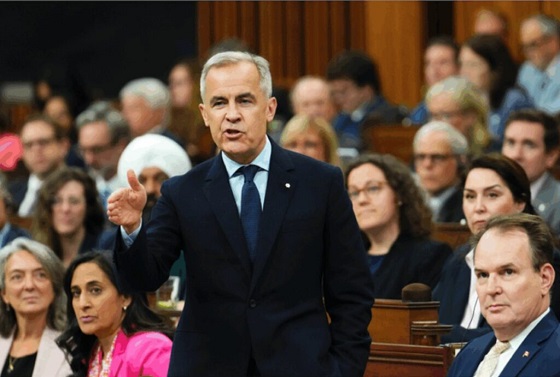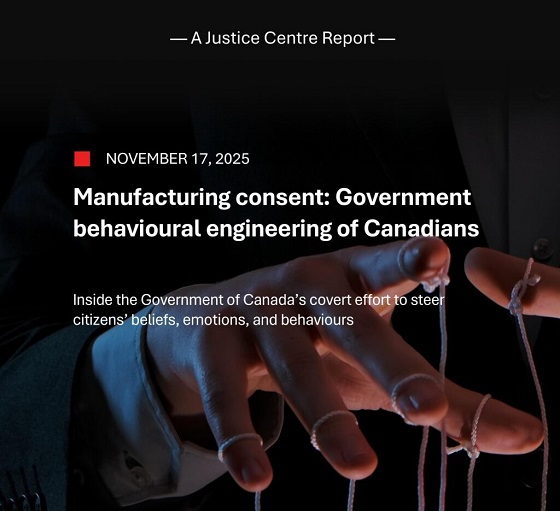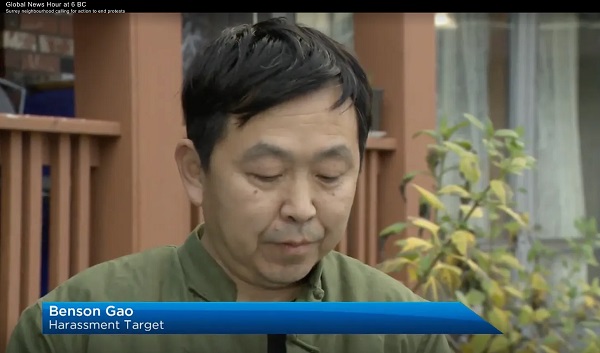Brownstone Institute
The EU is the Real Culprit of Censorship

From the Brownstone Institute
BY
The Supreme Court recently hearing arguments in the case of Murthy v. Missouri has refocused attention on the US government’s efforts to get social media platforms to suppress alleged Covid-19 “misinformation” and the issue of whether these efforts crossed the “line between persuasion and coercion” and thus constituted government censorship.
But how could the government’s efforts have not constituted government censorship when it had a full-fledged “Fighting Covid-19 Disinformation Monitoring Program” in which all the major online platforms were enrolled and which required them to submit periodic reports outlining, even indeed quantifying, their suppression of what was deemed “false and/or misleading information likely to cause physical harm or impair public health policies?”
The program covered almost the entire official course of the declared Covid-19 pandemic. It was rolled out in early June 2020, just three months after the WHO’s pandemic declaration, and it was only wound up in summer 2022, after most of the measures adopted in response to the pandemic declaration, including various forms of vaccine passports, had already been withdrawn. The participants in the program included Twitter, Facebook/Meta, Google/YouTube, and Microsoft (as owner of Bing and LinkedIn). An archive of the no less than 17 reports which each of them submitted to the government can be seen below.

A presentation of the data submitted specifically by Twitter in its final report can be seen below. Note that the figures given on accounts suspended and pieces of content removed are global figures, i.e. the government censorship program was affecting Twitter users all around the world.

Moreover, the government had already hit several of the participants in the program (Google, Facebook, and Microsoft) with massive fines in antitrust cases in recent years, and the program was being rolled out in conjunction with draft legislation which was practically guaranteed to become law and which gave the government the following powers, among others:
- The power to fine platforms up to 6% of their global turnover if they fail to comply with the government’s censorship demands: i.e. to suppress what the government deems misinformation or disinformation.
- The power to conduct “dawn raids” in case of suspected non-compliance: i.e. to have government agents break into and seal off company premises, inspect books or records in whatever form, and take away copies of or extracts from whatever books or records they deem relevant to their investigation.
- The all-important power, in the context of digital means of communication, to require platforms to provide the government access to their algorithms. This gives the government the opportunity not only to demand open and direct censorship in the form of content removal and account suspension, but also to demand and to influence the more subtle and insidious censorship that takes the form of algorithmic suppression.
In July 2022, the legislation was passed, as expected, and it is now law.
You do not remember this happening? Well, that is not because it did not happen. It did happen. It is because the government in question is not the United States government, but rather the European Commission.
The archive of the Fighting Covid-19 Disinformation Monitoring Program is here, the cited Twitter report is here, the legislation and now law is the EU’s Digital Services Act, which can be consulted here.
It was thus the European Commission which was the driving force behind the wave of censorship which struck Covid-19 dissent from 2020 to 2022, certainly not the Biden administration, whose role was limited to making informal, essentially toothless requests. There was indeed coercion, there was indeed a threat. But it was coming from a different source: it was the looming threat of the EU’s Digital Services Act (DSA).
It should be recalled that in Murthy v. Missouri, the US government has argued that it was merely asking platforms to apply their own content moderation policies. So, the question is: Where did those policies come from? “Content moderation” is, after all, just a kinder, gentler euphemism for censorship. Why should the platforms even have “content moderation” policies? Why do they have them?
The answer is that they have them because the European Union has demanded that they have them: first in the context of suppressing “hate speech” and more recently in that of suppressing alleged “disinformation.” The European Commission launched its so-called Code of Practice on Disinformation in 2018, “voluntarily” enrolling all of the major online social media platforms and search engines into it. Was Google, for instance, which the European Commission had just hit with a record-breaking €4.3 billion fine – plus a €2.4 billion fine just the year before! – going to refuse to play ball? Of course not.
The Fighting Covid-19 Disinformation Monitoring Programme was a sub-program of the Code of Practice. The Code of Practice would in turn lose its ostensibly “voluntary” character with the passage of the Digital Services Act, as the below European Commission tweet makes perfectly clear.

What is at issue in Murthy v. Missouri is an injunction preventing the US government from communicating with online platforms about “content moderation.” In the meanwhile, however, all the online platforms which signed up to the Code of Practice – and even many which did not but were simply unilaterally designated by the European Commission – have necessarily to be in contact with the latter on their “content moderation” in order to ensure compliance with the Digital Services Act.
The platforms are indeed required to submit periodic reports to the Commission. The Commission is even given the power to demand that the platforms undertake special “content moderation” measures in times of crisis, with a “crisis” being defined as “extraordinary circumstances…that can lead to a serious threat to public security or public health” (preamble, para. 91). Sound familiar?
The 2022 “strengthened” Code of Practice even set up a “Permanent Task Force on Disinformation,” in which representatives of the platforms meet with EU officials at least every six months, as well as in sub-groups in between the plenary sessions. The Task Force is chaired by the European Commission and also, for some reason, includes a representative of the EU foreign service.
So, even supposing the Supreme Court finds in favour of the plaintiffs in Murthy v. Missouri and upholds the injunction, what will have been gained? The US government will be prevented from talking to the platforms on “content moderation,” but the European Commission, the executive organ of a foreign power, will still be able to do so.
How is that a victory? The European Commission is in fact doing so, systematically and in a formalized manner, because the EU’s Digital Services Act makes it nothing less than the arbiter of what counts as “misinformation” or “disinformation” – the very arbiter of truth and falsity – and the platforms have to satisfy the Commission that they are respecting its judgment in this regard or face the ruinous DSA fines.
The fact of the matter is that Americans’ 1st Amendment rights are already well and truly dead and they are dead because of the actions of a foreign power. Lawsuits targeting the US government will do nothing to change this.
Here is what would: for the US Congress to pass its own law making it a crime for US companies to collaborate with a foreign government in restricting Americans’ speech.
The law could give federal authorities the same draconian powers that the DSA gives the European Commission, but now in the cause of protecting speech rather than suppressing it: (a) the power to apply crippling fines for non-compliance; (b) search-and-seizure powers, so that we can know exactly what communications the companies are having with the European Commission or other foreign powers or governments, rather than having to wait, say, for Elon Musk to kindly divulge them at his discretion; (c) the power to demand access to platform algorithms, so that we can know exactly what and whose speech platforms are surreptitiously, algorithmically suppressing and what and whose speech they are surreptitiously, algorithmically amplifying (which is just the flip side of the same coin).
If the platforms want to stay on both markets, then it would be up to them to find a modus vivendi which allows them to do so: for instance, by geo-blocking content in the EU. Censoring Americans’ speech to meet EU demands would no longer be an option.
Jay Bhattacharya, Martin Kulldorff, Adam Kheriarty (all three plaintiffs in Murthy v. Missouri): Are you going to call for such a law?
Senator Ron Johnson, Senator Rand Paul, Representative Thomas Massie: Are you prepared to propose it?
If you truly want to defend Americans’ freedom of speech, then the EU has to be confronted. Attacking the Biden administration for informal contacts with online platforms while staying silent about the EU’s systematic infringement and undermining of Americans’ 1st Amendment rights – and instrumentalizing of American companies to this end! – is not defending freedom of speech. It is grandstanding.
Brownstone Institute
Bizarre Decisions about Nicotine Pouches Lead to the Wrong Products on Shelves

From the Brownstone Institute
A walk through a dozen convenience stores in Montgomery County, Pennsylvania, says a lot about how US nicotine policy actually works. Only about one in eight nicotine-pouch products for sale is legal. The rest are unauthorized—but they’re not all the same. Some are brightly branded, with uncertain ingredients, not approved by any Western regulator, and clearly aimed at impulse buyers. Others—like Sweden’s NOAT—are the opposite: muted, well-made, adult-oriented, and already approved for sale in Europe.
Yet in the United States, NOAT has been told to stop selling. In September 2025, the Food and Drug Administration (FDA) issued the company a warning letter for offering nicotine pouches without marketing authorization. That might make sense if the products were dangerous, but they appear to be among the safest on the market: mild flavors, low nicotine levels, and recyclable paper packaging. In Europe, regulators consider them acceptable. In America, they’re banned. The decision looks, at best, strange—and possibly arbitrary.
What the Market Shows
My October 2025 audit was straightforward. I visited twelve stores and recorded every distinct pouch product visible for sale at the counter. If the item matched one of the twenty ZYN products that the FDA authorized in January, it was counted as legal. Everything else was counted as illegal.
Two of the stores told me they had recently received FDA letters and had already removed most illegal stock. The other ten stores were still dominated by unauthorized products—more than 93 percent of what was on display. Across all twelve locations, about 12 percent of products were legal ZYN, and about 88 percent were not.
The illegal share wasn’t uniform. Many of the unauthorized products were clearly high-nicotine imports with flashy names like Loop, Velo, and Zimo. These products may be fine, but some are probably high in contaminants, and a few often with very high nicotine levels. Others were subdued, plainly meant for adult users. NOAT was a good example of that second group: simple packaging, oat-based filler, restrained flavoring, and branding that makes no effort to look “cool.” It’s the kind of product any regulator serious about harm reduction would welcome.
Enforcement Works
To the FDA’s credit, enforcement does make a difference. The two stores that received official letters quickly pulled their illegal stock. That mirrors the agency’s broader efforts this year: new import alerts to detain unauthorized tobacco products at the border (see also Import Alert 98-06), and hundreds of warning letters to retailers, importers, and distributors.
But effective enforcement can’t solve a supply problem. The list of legal nicotine-pouch products is still extremely short—only a narrow range of ZYN items. Adults who want more variety, or stores that want to meet that demand, inevitably turn to gray-market suppliers. The more limited the legal catalog, the more the illegal market thrives.
Why the NOAT Decision Appears Bizarre
The FDA’s own actions make the situation hard to explain. In January 2025, it authorized twenty ZYN products after finding that they contained far fewer harmful chemicals than cigarettes and could help adult smokers switch. That was progress. But nine months later, the FDA has approved nothing else—while sending a warning letter to NOAT, arguably the least youth-oriented pouch line in the world.
The outcome is bad for legal sellers and public health. ZYN is legal; a handful of clearly risky, high-nicotine imports continue to circulate; and a mild, adult-market brand that meets European safety and labeling rules is banned. Officially, NOAT’s problem is procedural—it lacks a marketing order. But in practical terms, the FDA is punishing the very design choices it claims to value: simplicity, low appeal to minors, and clean ingredients.
This approach also ignores the differences in actual risk. Studies consistently show that nicotine pouches have far fewer toxins than cigarettes and far less variability than many vapes. The biggest pouch concerns are uneven nicotine levels and occasional traces of tobacco-specific nitrosamines, depending on manufacturing quality. The serious contamination issues—heavy metals and inconsistent dosage—belong mostly to disposable vapes, particularly the flood of unregulated imports from China. Treating all “unauthorized” products as equally bad blurs those distinctions and undermines proportional enforcement.
A Better Balance: Enforce Upstream, Widen the Legal Path
My small Montgomery County survey suggests a simple formula for improvement.
First, keep enforcement targeted and focused on suppliers, not just clerks. Warning letters clearly change behavior at the store level, but the biggest impact will come from auditing distributors and importers, and stopping bad shipments before they reach retail shelves.
Second, make compliance easy. A single-page list of authorized nicotine-pouch products—currently the twenty approved ZYN items—should be posted in every store and attached to distributor invoices. Point-of-sale systems can block barcodes for anything not on the list, and retailers could affirm, once a year, that they stock only approved items.
Third, widen the legal lane. The FDA launched a pilot program in September 2025 to speed review of new pouch applications. That program should spell out exactly what evidence is needed—chemical data, toxicology, nicotine release rates, and behavioral studies—and make timely decisions. If products like NOAT meet those standards, they should be authorized quickly. Legal competition among adult-oriented brands will crowd out the sketchy imports far faster than enforcement alone.
The Bottom Line
Enforcement matters, and the data show it works—where it happens. But the legal market is too narrow to protect consumers or encourage innovation. The current regime leaves a few ZYN products as lonely legal islands in a sea of gray-market pouches that range from sensible to reckless.
The FDA’s treatment of NOAT stands out as a case study in inconsistency: a quiet, adult-focused brand approved in Europe yet effectively banned in the US, while flashier and riskier options continue to slip through. That’s not a public-health victory; it’s a missed opportunity.
If the goal is to help adult smokers move to lower-risk products while keeping youth use low, the path forward is clear: enforce smartly, make compliance easy, and give good products a fair shot. Right now, we’re doing the first part well—but failing at the second and third. It’s time to fix that.
Addictions
The War on Commonsense Nicotine Regulation

From the Brownstone Institute
Cigarettes kill nearly half a million Americans each year. Everyone knows it, including the Food and Drug Administration. Yet while the most lethal nicotine product remains on sale in every gas station, the FDA continues to block or delay far safer alternatives.
Nicotine pouches—small, smokeless packets tucked under the lip—deliver nicotine without burning tobacco. They eliminate the tar, carbon monoxide, and carcinogens that make cigarettes so deadly. The logic of harm reduction couldn’t be clearer: if smokers can get nicotine without smoke, millions of lives could be saved.
Sweden has already proven the point. Through widespread use of snus and nicotine pouches, the country has cut daily smoking to about 5 percent, the lowest rate in Europe. Lung-cancer deaths are less than half the continental average. This “Swedish Experience” shows that when adults are given safer options, they switch voluntarily—no prohibition required.
In the United States, however, the FDA’s tobacco division has turned this logic on its head. Since Congress gave it sweeping authority in 2009, the agency has demanded that every new product undergo a Premarket Tobacco Product Application, or PMTA, proving it is “appropriate for the protection of public health.” That sounds reasonable until you see how the process works.
Manufacturers must spend millions on speculative modeling about how their products might affect every segment of society—smokers, nonsmokers, youth, and future generations—before they can even reach the market. Unsurprisingly, almost all PMTAs have been denied or shelved. Reduced-risk products sit in limbo while Marlboros and Newports remain untouched.
Only this January did the agency relent slightly, authorizing 20 ZYN nicotine-pouch products made by Swedish Match, now owned by Philip Morris. The FDA admitted the obvious: “The data show that these specific products are appropriate for the protection of public health.” The toxic-chemical levels were far lower than in cigarettes, and adult smokers were more likely to switch than teens were to start.
The decision should have been a turning point. Instead, it exposed the double standard. Other pouch makers—especially smaller firms from Sweden and the US, such as NOAT—remain locked out of the legal market even when their products meet the same technical standards.
The FDA’s inaction has created a black market dominated by unregulated imports, many from China. According to my own research, roughly 85 percent of pouches now sold in convenience stores are technically illegal.
The agency claims that this heavy-handed approach protects kids. But youth pouch use in the US remains very low—about 1.5 percent of high-school students according to the latest National Youth Tobacco Survey—while nearly 30 million American adults still smoke. Denying safer products to millions of addicted adults because a tiny fraction of teens might experiment is the opposite of public-health logic.
There’s a better path. The FDA should base its decisions on science, not fear. If a product dramatically reduces exposure to harmful chemicals, meets strict packaging and marketing standards, and enforces Tobacco 21 age verification, it should be allowed on the market. Population-level effects can be monitored afterward through real-world data on switching and youth use. That’s how drug and vaccine regulation already works.
Sweden’s evidence shows the results of a pragmatic approach: a near-smoke-free society achieved through consumer choice, not coercion. The FDA’s own approval of ZYN proves that such products can meet its legal standard for protecting public health. The next step is consistency—apply the same rules to everyone.
Combustion, not nicotine, is the killer. Until the FDA acts on that simple truth, it will keep protecting the cigarette industry it was supposed to regulate.
-

 Alberta1 day ago
Alberta1 day agoAlberta Offers Enormous Advantages for AI Data Centres
-

 Alberta1 day ago
Alberta1 day agoNational Crisis Approaching Due To The Carney Government’s Centrally Planned Green Economy
-

 Alberta2 days ago
Alberta2 days agoCalgary mayor should retain ‘blanket rezoning’ for sake of Calgarian families
-

 Bruce Dowbiggin1 day ago
Bruce Dowbiggin1 day agoSports 50/50 Draws: Make Sure You Read The Small Print
-

 COVID-191 day ago
COVID-191 day agoNew report warns Ottawa’s ‘nudge’ unit erodes democracy and public trust
-

 Censorship Industrial Complex1 day ago
Censorship Industrial Complex1 day agoQuebec City faces lawsuit after cancelling Christian event over “controversial” artist
-

 Carbon Tax16 hours ago
Carbon Tax16 hours agoCarney fails to undo Trudeau’s devastating energy policies
-

 Great Reset24 hours ago
Great Reset24 hours agoCanadian government forcing doctors to promote euthanasia to patients: report












